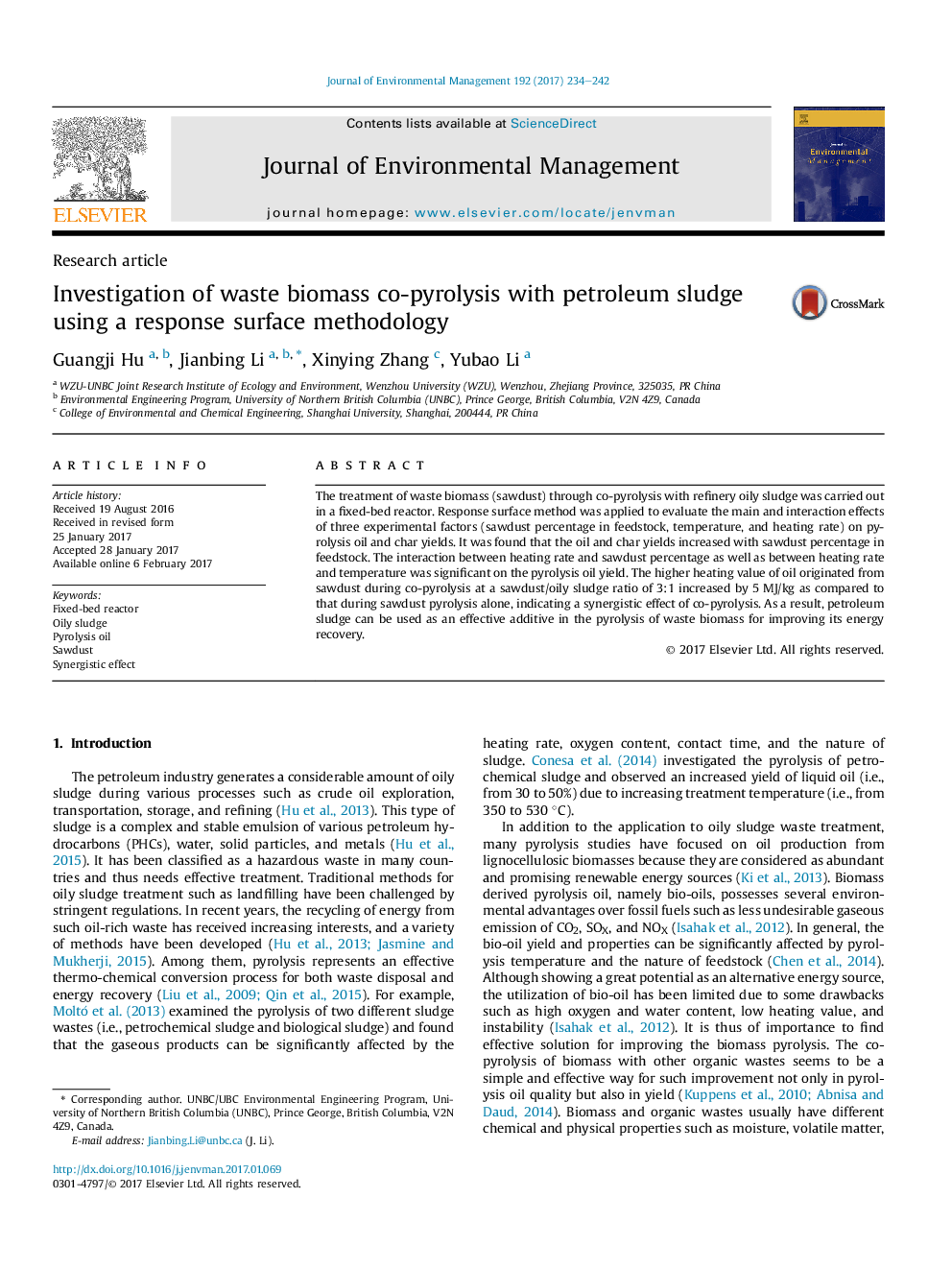| کد مقاله | کد نشریه | سال انتشار | مقاله انگلیسی | نسخه تمام متن |
|---|---|---|---|---|
| 5117047 | 1485223 | 2017 | 9 صفحه PDF | دانلود رایگان |
- Co-pyrolysis increased the yield of oil derived from sawdust by about 4%.
- Co-pyrolysis increased the oil hydrogen/carbon ratio and higher heating value.
- Models were developed to predict pyrolysis oil and char yields.
- Co-pyrolysis is a promising method for energy recovery and waste management.
The treatment of waste biomass (sawdust) through co-pyrolysis with refinery oily sludge was carried out in a fixed-bed reactor. Response surface method was applied to evaluate the main and interaction effects of three experimental factors (sawdust percentage in feedstock, temperature, and heating rate) on pyrolysis oil and char yields. It was found that the oil and char yields increased with sawdust percentage in feedstock. The interaction between heating rate and sawdust percentage as well as between heating rate and temperature was significant on the pyrolysis oil yield. The higher heating value of oil originated from sawdust during co-pyrolysis at a sawdust/oily sludge ratio of 3:1 increased by 5Â MJ/kg as compared to that during sawdust pyrolysis alone, indicating a synergistic effect of co-pyrolysis. As a result, petroleum sludge can be used as an effective additive in the pyrolysis of waste biomass for improving its energy recovery.
Journal: Journal of Environmental Management - Volume 192, 1 May 2017, Pages 234-242
